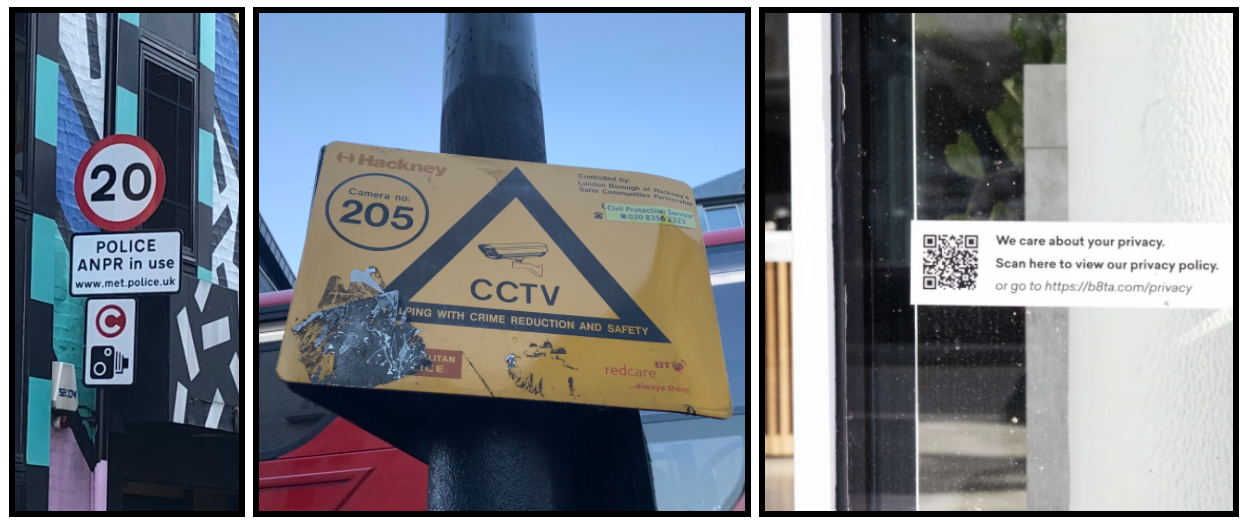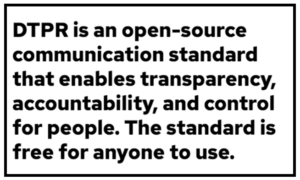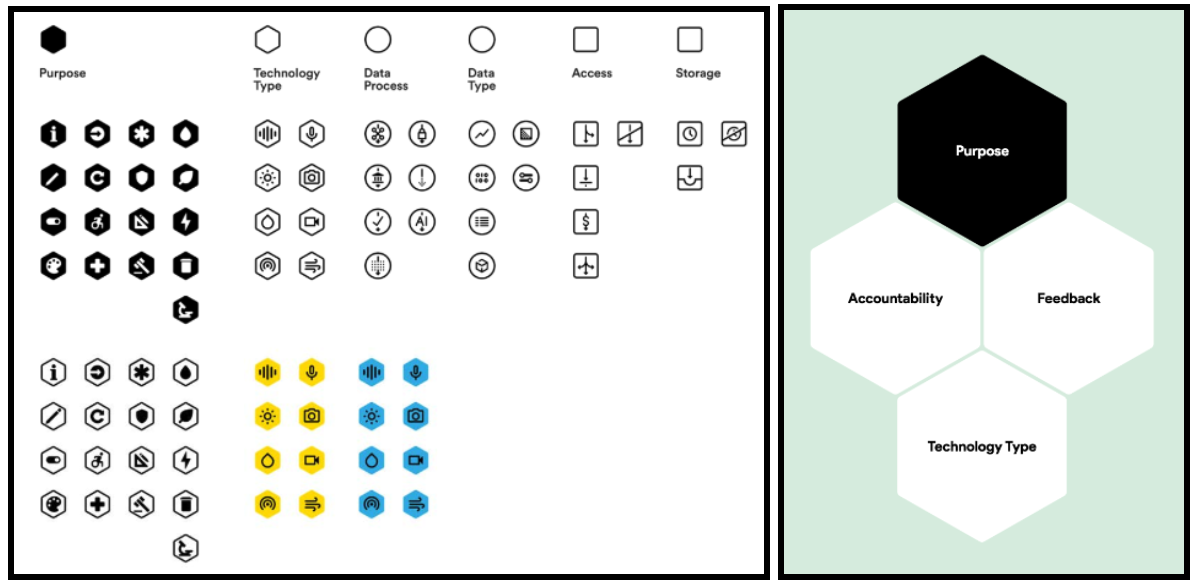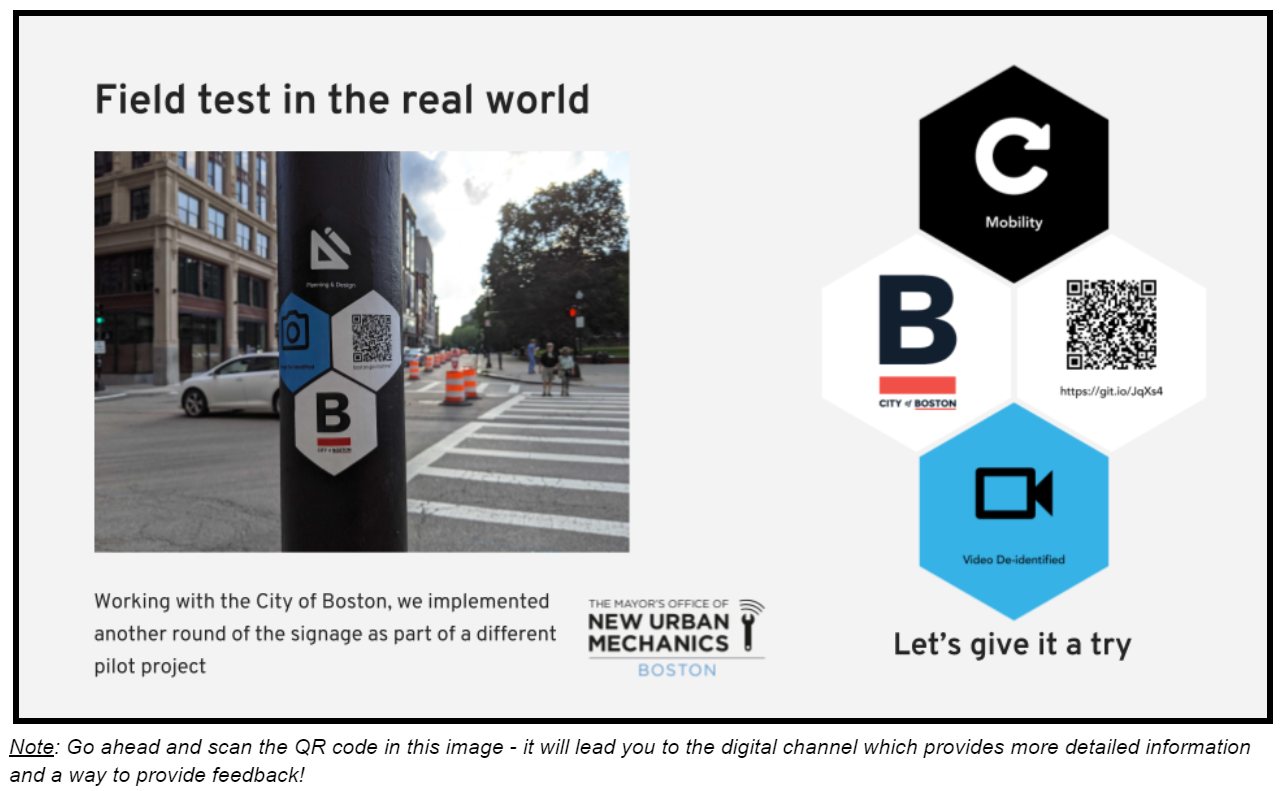Realizing our democratic values: unveiling the invisible in our shared spaces

Adrienne Schmoeker is the former Deputy Chief Analytics Officer for New York City, where she was Director of Civic Engagement and Strategy in the New York Mayor’s Office of Data Analytics, managing a portfolio and a team responsible for the New York Open Data program, data policy research and analysis projects. Adrienne is currently a member of the Global Advisory Board for the Open Data Policy Lab and contributes to various projects in the areas of public service technology, civic engagement, and digital literacy efforts.
Jacqueline Lu helps organizations build new nervous systems that use tech and data. At Helpful Places, she’s building a coalition to implement and improve DTPR, an open-source communication standard for digital technology that enables agency for people in the real world, by advancing greater transparency and civic dialogue on the use of digital technologies. Jacqueline is also Data Lead at Mozilla Foundation, where she is building a data strategy that will glean insights and measure progress on Mozilla’s theory of change for trustworthy AI. Previously, she was Director of Digital Integration at Sidewalk Labs where she led incorporating innovation objectives, technology policy and data ethics into the company’s approach to urban development projects.
Parks, public transportation, sidewalks, roads. This is what comes to mind when we think of infrastructure. What about a free wifi network, a police security camera, a sensor to detect vibrations from nearby construction? These might be invisible or hard-to-see at best; the digital infrastructure of many cities. Private actors set up invisible digital infrastructure as well: air-quality sensors for scientific research by a university, a private security camera in front of a privately-run senior center, or a commercial center providing a public wifi network.

The next time you go for a walk around your neighborhood see if you can notice a device or two, and whether you can identify who is responsible for it and what its purpose is. A common reality is that signage notifying the public that digital infrastructure is in place is often lacking, inconsistent or difficult to decipher. Should we be satisfied with this status quo?
Democracies are built on the values of having a fair and participatory information environment, in addition to ensuring that personal autonomy is respected (Source: Ethics by Design Workshop Series: Democracy, Privacy & Technology led by the ethics & technology consultancy Hattusia). Invisible digital infrastructure as it currently exists in most of its forms challenges these democratic values.

Many forms of this invisible digital infrastructure include sensor-based technologies which are connected to each other and/or the internet. According to forecasts by Statista, the number of connected devices in use around the world is predicted to increase 127% from 22 billion devices in 2018 to 50 billion devices in 2030.
How might we bring transparency and engagement to this growing invisible infrastructure in our public spaces?

In 2019 Jackie Lu and Patrick Keenan led the development of a series of open-source resources for naming, identifying and engaging with different sensor-based and digital (invisible) technologies present in physical spaces. This set of resources live on as a part of a project known as Digital Trust for Places and Routines (DTPR).
A key component of DTPR involves describing sensor based technologies that are present in our invisible digital infrastructures using an accessible, intuitive and inviting visual human language.

A variety of icons printed on hexagons are physically present (mounted on a sign or as stickers) near the invisible digital infrastructure. A mix of hexagons are pieced together to present different pieces of information: the technology’s purpose, the organization responsible (presented above as “Accountable”), how to provide feedback and learn more (typically a QR code) and the technology type. The QR code enables you to access additional information online via a smartphone or other internet-enabled device. The online information includes a plain-language description of the technology along with information about the purpose of the technology, data collected, data processing details, data storage and detailing how the data can be accessed and by whom. Icons and a taxonomy exist for this set of information as well. For the entire design guide see the DTPR GitHub repository.

Once DTPR is implemented in a public space it enables us to:
- Be aware of digital infrastructure that would otherwise be invisible
- Use a common visual language to describe the technology components of the invisible digital infrastructure
These two benefits of DTPR implementation provide the foundation for a healthy democracy: dialogue and debate. If we cannot see what is happening in our public spaces, how can we discuss whether they are serving us appropriately or not? By making the invisible more transparent and legible, DTPR gives us the tools to align invisible digital infrastructure with our democratic values.
Transparency of course, is just a starting point. Fundamental to a successful DTPR implementation is community engagement, dialogue and feedback on the digital systems that are described and made legible to people through the use of the DTPR communication standard. DTPR was piloted in Boston in the Summer of 2020 with support from Helpful Places, and we are currently seeking funding and partners for additional pilots in 2021.
If you are interested in contacting the DTPR stewards directly please reach out to: dtpr@helpfulplaces.com. Helpful Places and its collaborators also provide consulting services designed to support successful DTPR implementation – let us know how we might be able to help.
DTPR continues to evolve as an open source project and is currently stewarded by an emerging coalition of partners including Normative, Digital Public Square, GLIA Foundation and Helpful Places. You can learn more about DTPR on the Helpful Places website, on GitHub and by requesting to join a dedicated Slack community.
By Adrienne Schmoeker and Jacqueline Lu
Article Notes:
(1) As a matter of transparency, I would like to share that I am currently involved with the coalition of partners stewarding the DTPR project, led by Jackie and Patrick via a new organization: Helpful Places.
The Icons, Design Guide and Taxonomy for DTPR are licensed by the Digital Transparency in the Public Realm contributors under the Creative Commons Attribution 4.0 International (CC BY 4.0).



